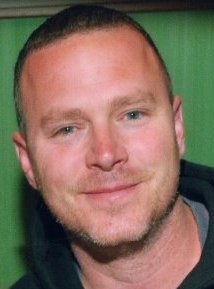Watching the fight scenes in The Hobbit may make us grimace and wince, but for Steven McMichael, they are the result of training every actor, stuntman, and double in the scene, for Steven is the fight choreographer for The Hobbit trilogy.
Steven, a former Marine, was a stuntman for many years before a broken neck forced him to rethink his career and become a stunt coordinator. His credits include working with Sir Ian McKellen on the first X-Men, ‘Where,’ he said, ’I was the stunt double for Wolverine (Hugh Jackman).’
I asked Steven how he became involved with The Hobbit and he told me, ‘I got my foot in the door thanks to my good friend and associate Glenn Boswell who I worked with on iRobot and Fantastic Four II. Peter Jackson was looking at ten sword masters/fight choreographers from around the world; Glenn became the stunt coordinator and pushed hard for me after I sent in my demo reel, and the rest is history.’ Steven then explained what his role as fight choreographer meant saying, ‘My job involved training all of the actors, stunt performers, large and small scale doubles and selected background performers. I also had two assistants, Allan Smith and Steve A. Davis along with Tim Wong a New Zealand stunt coordinator who helped me create over 70 different fight scenes for all three films.’
We’ve all heard of dwarf boot camp, but I wondered how Steven went about training such a diverse group with different levels of fitness and skills? He said, ‘Every actor, stunt performer, scale double, and even selected background performers went through rigorous training at our Stunt Hanger Training Facility. Tim Wong would take all of the lead actors, stunt performers, and scale doubles through a designed circuit training to get them in shape. As for the fight and weapons training, everybody had various skill sets. I created muscle memory fight sets numbered one through six and specific footwork pattern to help facilitate the appearance of the same skill level for the actors throughout the shoot.’
Strength and mental endurance were important, as the costumes alone weighed up to 60kg. To help, the dwarves were given aluminium swords and taught techniques that flowed into each other. So what weapons did the dwarves have to master? ‘There were at least two main weapons per dwarf,’ Steven said, ‘with another five that I taught them how to use. Swords and staffs were the main weapons I trained them on.’
Of course, getting fit is one thing, but keeping fit over 18 months of filming is quite another. The actors had to spend hours in make-up, so when did they fit the training in? ‘Whenever they had time!’ Steven said, ‘Some of them would request time at the Stunt Hanger gym which was only a five minute drive away from Stone Street Studios. The shoot was so physically demanding that even shooting on set was a workout within itself.’
Steven and Aidan Turner give Richard Armitage and Graham Mctavish some encouragment in stunt training
Steven had to realise Peter Jackson’s visions of the fight scenes in The Hobbit. How had he found working with Peter? ‘It was an amazing experience,’ Steven said, ‘to work with a director like Peter, I honestly believe he was the only one who could’ve directed the Trilogy. His intense knowledge of the J.R.R. Tolkien world helped facilitate his seamless vision when it came to designing the fights and the training of the actors. Peter had very specific ideas for how the dwarves, orcs, elves, and even the humans looked, fought, and moved. I worked closely with Terry Notary (Movement Coach) who designed the specific character movements and, in conjunction with Peter’s vision, we created something that I would say is dynamic and great to watch.’
As we know, Peter filmed The Hobbit in 3D 48fps. When I asked Steven how this affected the fight scenes he said, ‘Shooting in 3D posed its own unique set of problems. In the 3D environment you were able to register depth which translated into miss on film. We came up with a way to actually hit by incorporating foam covered weapons that were green so they could be CG’d. This was the only way the fight scenes could be done safely and still have the dynamics of realism.’
So which of the fight scenes in The Hobbit: An Unexpected Journey is Steven most proud of? ‘Definitely, the Goblin Tunnels! This was a running battle on a set that had uneven terrain and was changed every day by the un-heralded Black Ops Crew: all the actors, stunt performers, and scale doubles should be commended for it. A lot of hard and physically demanding days spent running and swinging their weapons in close proximity to one another. I’m proud to say that there were only two minor injuries with weapons in my 18 month tenure on The Hobbit.’
If you’d like to see Steven in action take a look at his stunt demo reel



